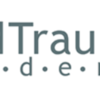(a) The Neurosequential Network - COVID-19 Resources
The videos in this series with Dr. Bruce Perry are provided to view and share. We have closed captioned each video. To change captions from English to another language, select "settings" (cog at bottom right), select “Subtitles/CC” then select “Auto-translate” and finally select the language of your choice.
(b) Child Trauma Academy - History
The ChildTrauma Academy of today reflects a long tradition of academic excellence in research, education and service. Founded in 1990 by Dr. Perry as the Center for the Study of Childhood Trauma, the original non-academic partner in this unique “Institute without Walls” was St. Joseph Carondolet Children’s Center, a not-for-profit child welfare agency in Chicago, Illinois serving abused and neglected children. The basic neuroscience component of the Center was the Laboratory of Developmental Neurosciences founded at the University of Chicago by Dr. Perry as part of the Departments of Psychiatry, Pediatrics and Pharmacology. It was during this period that the work of Dr. Perry and the CTA were among the first of a small group of colleagues studying and recognized the importance of trauma on the developing child’s brain.
(c) Born to Love
From birth, we seek intimate connections, bonds made possible by empathy — the ability to love and to share the feelings of others. Review scientific and historical examples of how empathy develops, why it is essential to our development, and how the modern world threatens it. Explore how compassion underlies the qualities that make society work and how difficulties related to empathy are key factors in social problems, mental illness, and even physical health. Learn how recent technological changes, child-rearing practices, education, and lifestyles affect a child's understanding of human contact and deep relationships, the foundation for empathy and a caring, healthy society. Take home practical ideas for combating the negative influences of modern life and fostering social change.
(d) Seven Slide Series:
A brief introduction to core concepts regarding brain structure and function that provide the basis for developmentally sensitive and trauma-informed caregiving, education and therapy.
(Part 2): Sensitization & Tolerance
Sensitization and Tolerance: An introduction to the crucial role that patterns of stress response system activation play in pathology and healing.
(Part 3) Threat Response Patterns
An introduction to variety of adaptive responses that can be used under threat, with a focus on the hyperarousal and dissociative continuum.
(Part 4): State Dependent Functioning
This brief video highlights the importance of understanding how stress and distress influence the way we think, feel and act.
(e) Early Child Brain Development
Children are resilient, a common aphorism, but not necessarily true. Renowned child psychiatrist, Dr. Bruce Perry has researched how a child's environment, particularly those who encounter trauma, affects the child's brain development. Perry talks about his clinical work with children, who experienced trauma, how that stress led to both physical and mental health complications and what can be done to improve the lives of at-risk young people. He also talks about our society and how our ancient ancestors had much more supportive social structures for children than today's youth.
(f) Attachment and Developmental Trauma
Dr. Perry’s relationship and attachment theory healing model first assesses each child as an individual, using his Neurosequential Model of Therapeutics (NMT). He emphasizes that there is no one label for child trauma. Rather, “there are very individualized patterns of exposure to trauma (all with unique timing, nature, and patterns)… So we don’t call ‘it’ anything,” he wrote me recently. “We describe it — and try to ‘illustrate’ each individual’s trajectory separately” with the NMT’s individualized brain mapping technique.
(g) "Your Brain Reflects the World You Grow Up In"
Being born a human being does not ensure a child will become humane. The capacity to care, to share, to listen, value and be empathic - to be compassionate - develops from being cared for, shared with, listened to, valued and nurtured. Humane caregiving expresses our capacity to be humane. Inhumane caregiving can decrease or even destroy this capacity.
(h) Repair of Early Trauma: Bottom Up Approach
Told to us through the voices of children, this unique animation teaches us that by putting together the seven-piece jigsaw puzzle of 'Developmental Trauma', we can understand how a child’s adverse childhood experiences have shaped their emotional world and outward behaviour. Once we understand this, we can then work with a child to help them with their developmental trauma using an innovative therapeutic approach called the ‘Neuro-Sequential Model of Therapeutics’. This model recovers and repairs each part of a child’s brain in a specific, phased and effective order.





Comments (0)